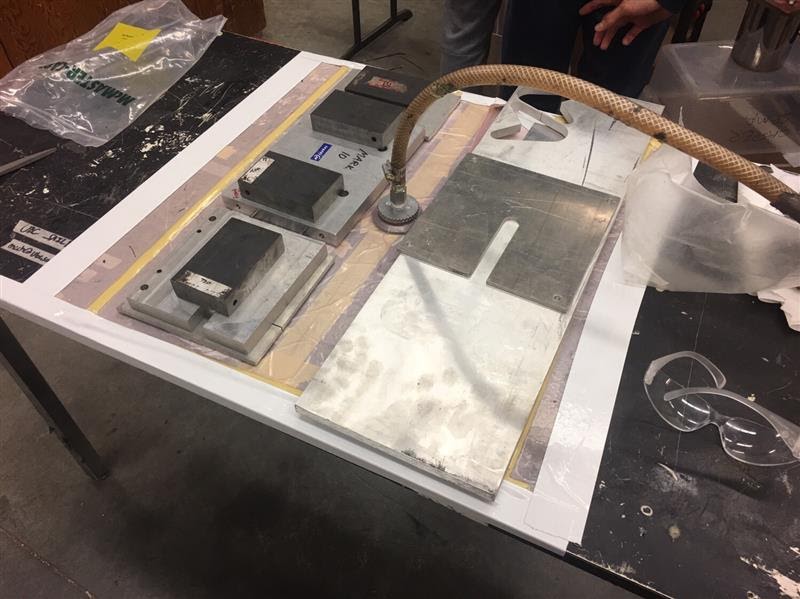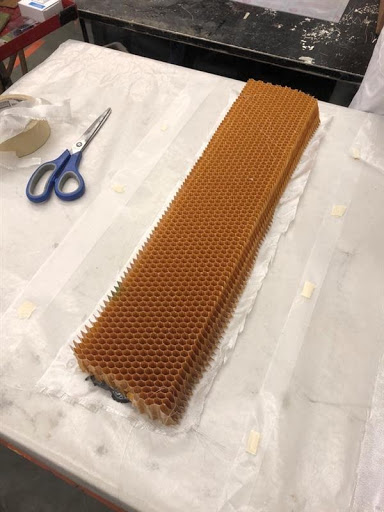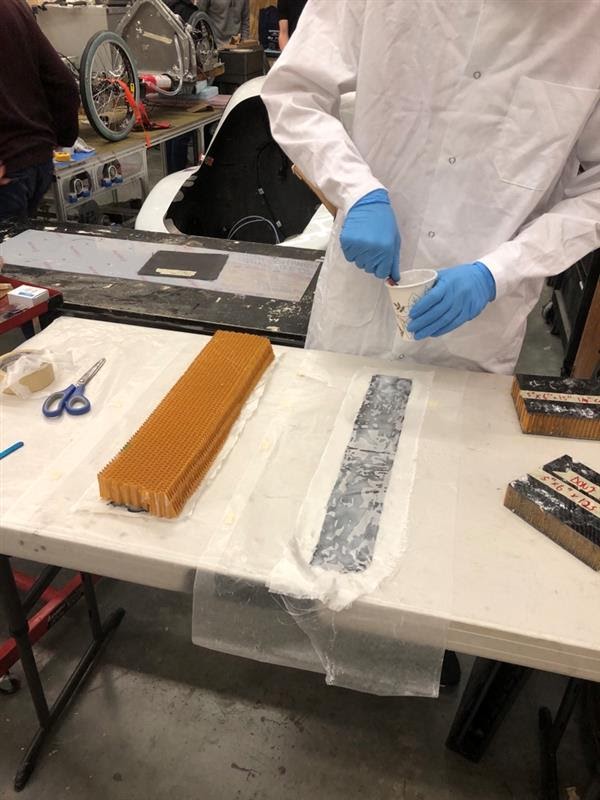Overview
Background
As a VMEC Project Lead, I was in charge of the FCV chassis design, manufacturing and simulation. This role included destructive testing of composite structures, stress simulations, and manufacturing.
The fuel cell vehicle is new this year and hopes to compete in the 2022 Shell Eco Marathons Competition which pioneers our pursuit for ultra-efficient vehicles.
The goal of the project is to develop a new, lightweight chassis for the upcoming fuel cell vehicle. The chassis made for the team's gas prototype car was overspeced and required optimization to improve its strength to weight ratio. Thus we started with Helius and ANSYS simulations in order to determine our ideal carbon fibre layers and orientations. We planned on having a sandwich chassis which composes of carbon fibre layers molded onto a honeycomb nomex core.
Mechanical
Full technical report including all simulations, models and conclusions can be found here.
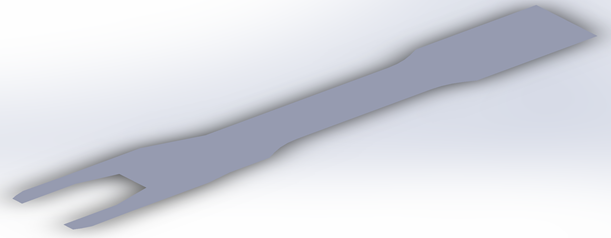
We created a surface model which would mimic the shape of the new fuel cell vehicle. This model was constrained by the shell we were using and also influenced by our current Gas-Prototype vehicle. The surface model was used to conduct static loading simulations. Using ANSYS ACP, we were able to determine the first locations of failure and the predicted deflections given an estimated load in the critical areas (driver seat and fuel cell engine). Using this information we built a scaled-down model of our chassis to bring to a lab for destructive testing.
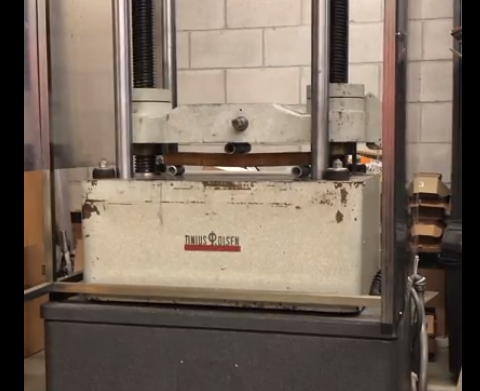
We were able to verfiy our simulations on Helius and ANSYS through this lab session. Our 2"x18" rectangular prototype was able to withstand 621.6 lbf with a corresponding deflection of 0.42". Snippets of the TO testing can be found here including all simulation and test data.
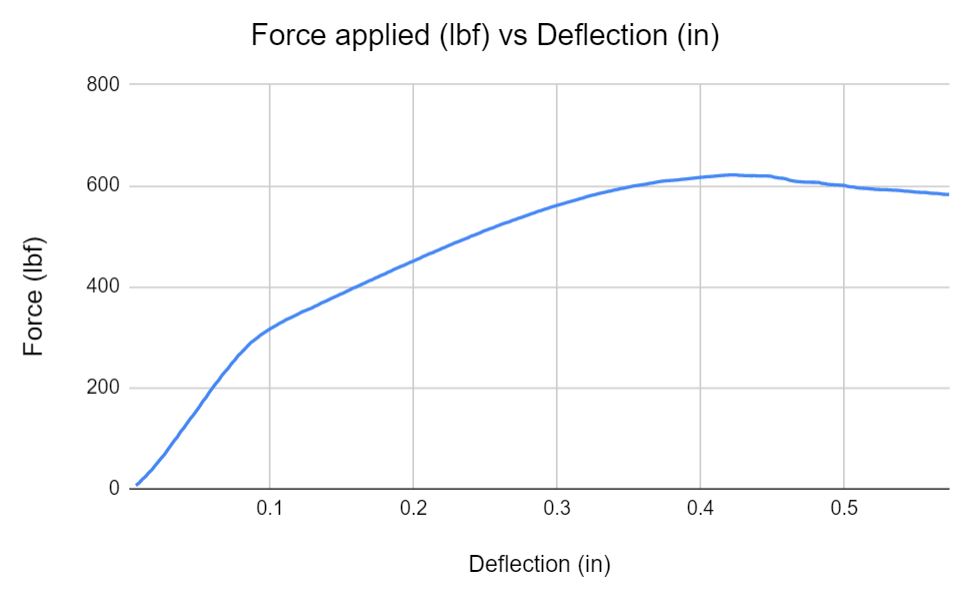
Unfortunately, we have been unable to manufacture the final chassis due to COVID19. We will be looking into this as soon as lockdown has been lifted.
Pictures
